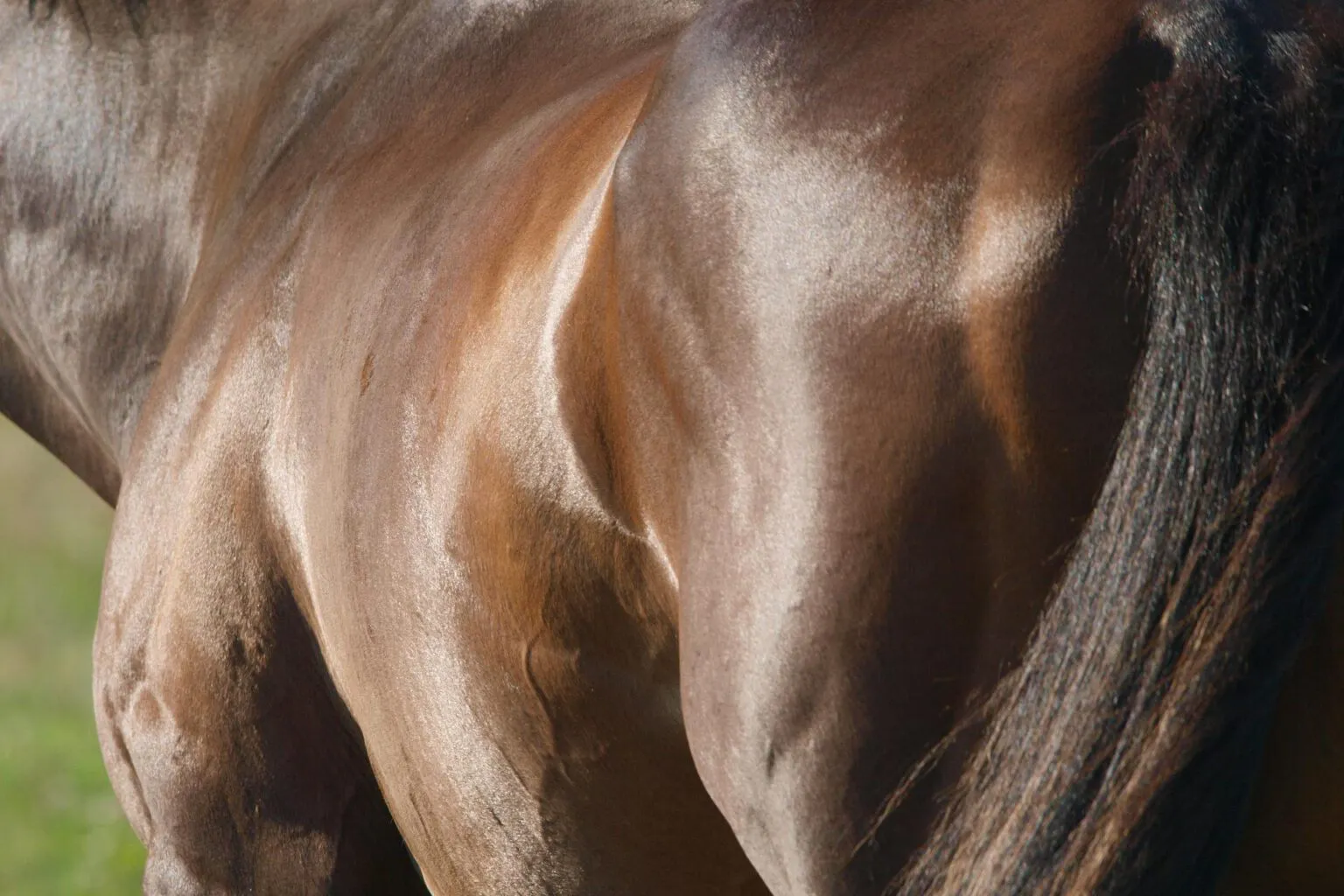Menu

Discovering a strange patch of scales or a bald spot on your horse's skin can be worrying. And even if it doesn't seem to bother the horse, its mere presence means that something is not quite right. Of course, it is always a good idea to contact the vet, but there are also many things you can do as an owner. The biggest challenge is determining exactly what type of skin problem you are dealing with. Using the wrong treatment for a minor skin condition can make the problem worse. That's why we're going to go through some of the most common skin disorders and what to do about them, right here.
Rain rot is also called dermatophilosis. Dermatophilosis is a skin inflammation caused by dermatophilosis congolensis. The skin inflammation occurs in areas of the skin with reduced local immunity, probably due to skin irritation, possibly as a result of a wet haircoat. Often, skin changes begin on the rump, back or croup. Sometimes, they spread to the head and legs. Typical of an early reaction is when the hair stands up more like a brush than the rest of the coat. Often, the hair falls out in clumps with scabs, leaving bare skin on the body. Dermatophilosis is widespread in stables and riding schools.
Rain rot can heal itself in the acute phase, but it is recommended to have the horse treated if infected. The infection can easily spread and be uncomfortable for the horse, especially in more exposed areas of the body, such as the back and mane. If the infection has spread down to deeper skin layers, the vet will give the horse an antibiotic treatment such as penicillin procaine or streptomycin.
The best thing you can do to prevent rain rot is to ensure that your horse stands as dry as possible. If you begin to notice scabs on the skin and stiff hair, use a disinfectant shampoo specifically targeted for treating rain rot. Additionally, it is also a good idea to disinfect your brushes and wash your horse's blankets and saddle pads.
Read also: Young girl chose horse with the eye disease cataracts and never regretted it
This minor skin disorder is usually more of a nuisance for the owner than for the horse. Dandruff in horses is hereditary. It is caused by either dry or oily skin that flakes off as large waxy crusts. It is especially prevalent on the mane, tail, and forelock. Because dandruff doesn't cause the horse pain or itching, treatment is not always necessary. However, that doesn't mean that there aren't a few simple solutions for getting rid of the problem.
Choose a dandruff shampoo specifically designed for horses and wash the affected areas well, so the soap lathers. Use a scrubber or brush, if necessary, to remove excess skin layers. It may be necessary to repeat the treatment a few times over a week's time to completely get rid of the problem.
Ringworm is a fungal infection of the skin and not a worm, as the name suggests. It is a common skin disorder, especially in foals and young horses. Adult animals develop resistance to the fungus. The symptoms of ringworm are skin changes on the croup, flank, and chest, which start as small bumps and grow larger and larger. Ringworm occurs in a superficial form and in a deep form. Often, you can see that the horse has ringworm if it has circular patches of hairless skin with scabs. These are typically seen on the face, shoulders, neck, or under the saddle.
It is not attractive to look at, but ringworm rarely bothers horses. However, it should still be treated as it spreads quickly and is highly contagious. The best treatment method is to isolate the horse to prevent the fungus from spreading. Then, shave the hair in the affected areas and treat with an antibacterial dandruff shampoo. It is important to wash the entire horse, as spores can be present anywhere in the hair coat. Imaverol is the most effective treatment, but some horses develop a nettle rash-like reaction, and for these horses, it is better to treat with a 2% Nizoral shampoo or other medication that the vet can prescribe. Also, be sure to disinfect brushes, saddle pads, and blankets, and give the stall a thorough cleaning with antibacterial soap.
Read also: (sponsored content) Many cases of laminitis: How to deal with and prevent it